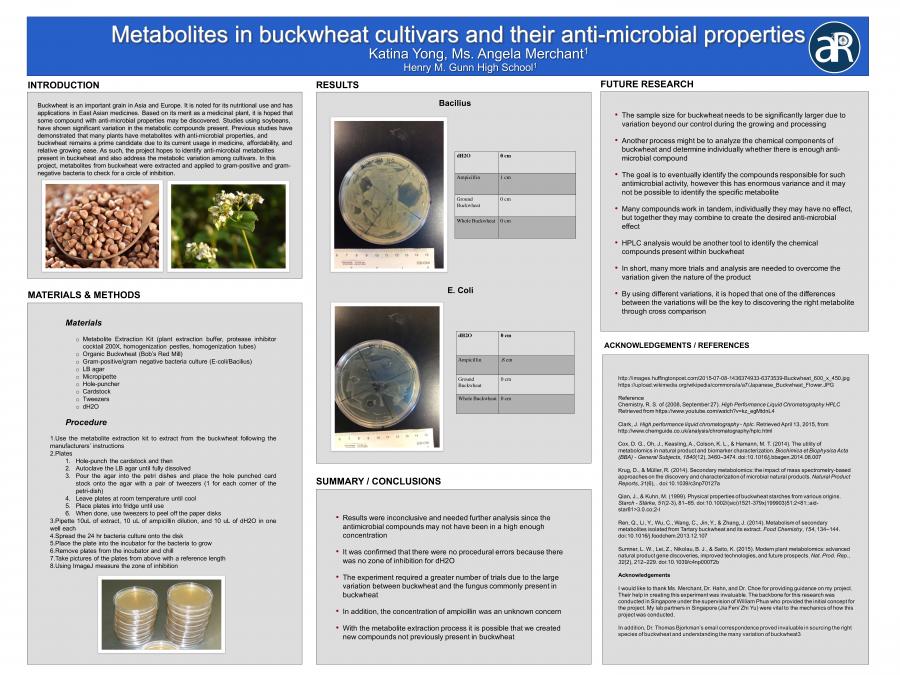Metabolites in Buckwheat Cultivars and Their Anti-microbial Properties by Katina Y.
Presentation
Summary
This project hopes to identify the metabolites in various buckwheat cultivars and address their anti-microbial properties. Buckwheat is an important grain in Asia and Europe. It is noted for its nutritional use and has applications in East Asian medicines. Based on its merit as a medicinal plant, it is hoped that some compound with anti-microbial properties may be discovered. From studies using soybeans, significant variation in the metabolic compounds present have been found. Previous studies have demonstrated that many plants have metabolites with anti-microbial properties, and buckwheat remains a prime candidate due to its current usage in medicine, affordability, and relative growing ease. As such, the project hopes to identify anti-microbial metabolites present in buckwheat and also address the metabolic variation among cultivars. During the NJC-PAUSD research exchange, it was concluded that the best method to test the efficacy of the extract was to directly place the extract within the agar gel wells. The rationale behind this was because the amount of extract on the plate was much easier to quantify. The first step is to obtain the seeds of various buckwheat cultivars. The project plans on using an extraction kit to extract the metabolites present in the seeds. The extract will then be tested alongside dH2O (control) and standard antibiotics on gram-positive and gram-negative bacteria using a direct agar plate diffusion method. It is uncertain at this stage how many samples of the extract will have to be tested on the bacteria. Based on correspondence with Professor Bjorkman from Cornell University, endophytes are prevalent in buckwheat and their effects on the results is unknown. However, the number of samples that need to be run is quite high as to account for genetic variability in the cultivar in addition to the unforeseen impact of the endophytes. After establishing which extracts are more potent, the project will run combined gas chromatography‐mass spectrometry and ultra‐performance liquid chromatography‐tandem mass spectrometry to identify the metabolites. By analyzing substantial spikes in the concentration of certain metabolites, the project hopes to identify which metabolic compounds contribute to the anti-microbial effect...

